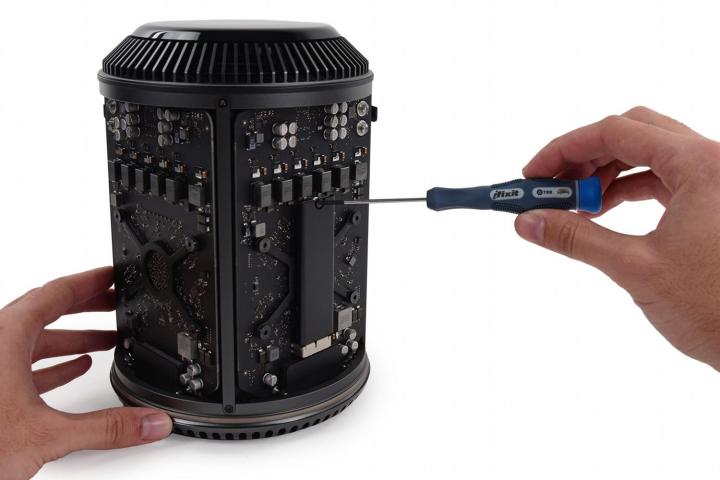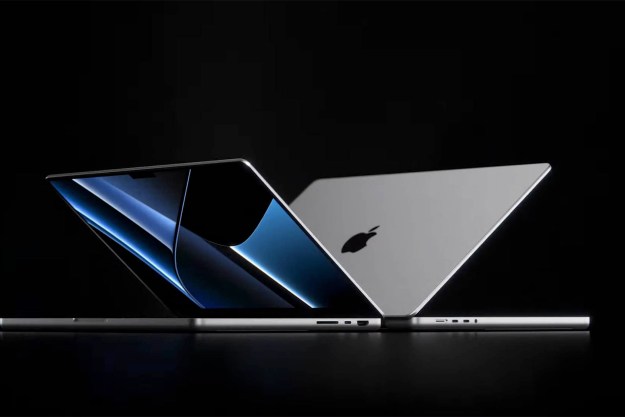
We didn’t have much hope for the new Mac Pro’s user serviceability until a tear down by Other World Computing showed that Apple’s new tower of power features a socketed, and thus upgradeable, CPU. Now iFixit has worked their teardown magic, and found even more room for user upgrades and repairs.
The site’s examination of the Mac Pro notes that “the design is surprisingly modular and easy to disassemble.” Apple uses common Torx screws rather than a proprietary design, the outer casing can be removed by sliding a simple lock, and critical components such as the RAM, system fan, solid state hard drive and CPU are removable.
Many components are relatively easy to access, as well, because most of the system’s hardware is mounted facing outwards; the interior is just a giant heat-sink. Only the CPU, which is mounted to the heatsink, is tricky.
That’s not to say all the news is good, however. While the CPU and RAM can be replaced without issue, the customized AMD FirePro graphics chips are soldered on a customized graphics card, which means only replacement parts from Apple will fit. There’s also no room for additional internal storage and many parts that don’t impact performance, such as the power supply, are non-standard and thus can’t be upgraded or repaired with off-the-shelf hardware.
Though iFixit gave the new Mac Pro an 8/10 for ease of repair, they also noted that “working on this $3,000 device without a repair manual could be risky.” In other words, you’re probably better off taking it to the Genius Bar then working on it yourself – until the warranty expires, at least.
Editors' Recommendations
- Best MacBook deals: Get an Air for $605 and save on M3 MacBook Pro
- MacBook Pro OLED: Here’s everything we know so far
- Hurry! This iMac is at its cheapest ever price right now
- The 5 best MacBooks for video editing in 2024
- How to select multiple files on a Mac


